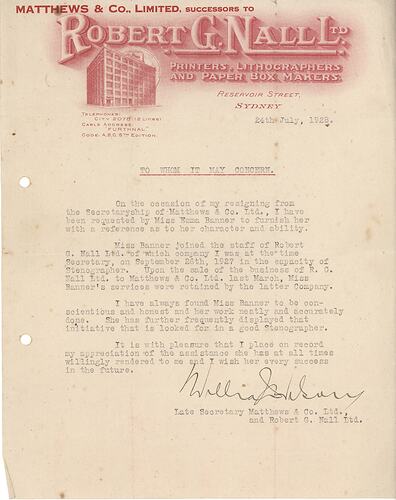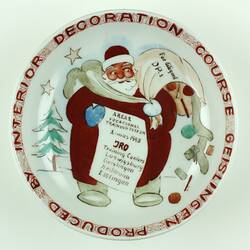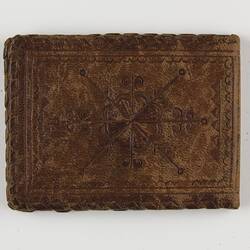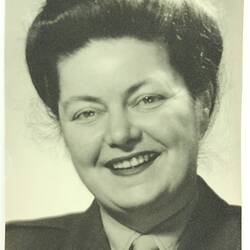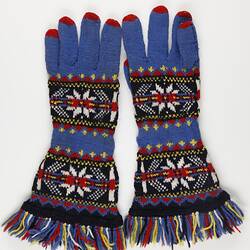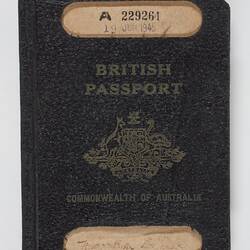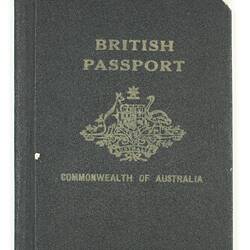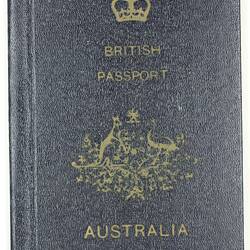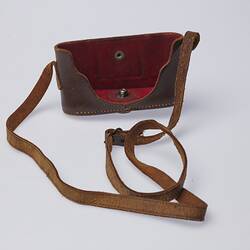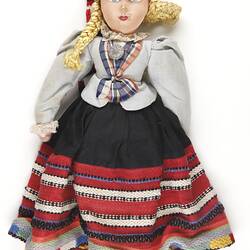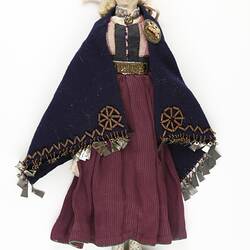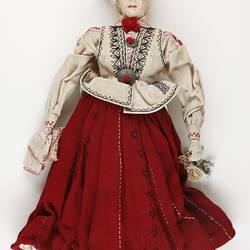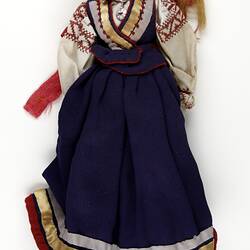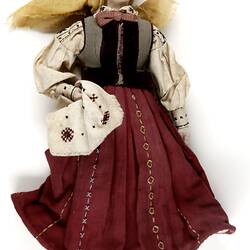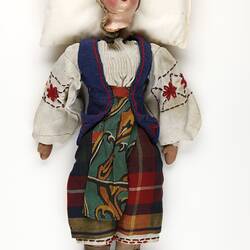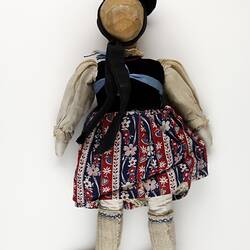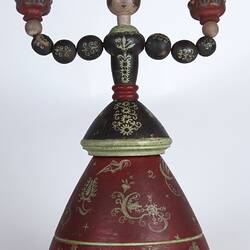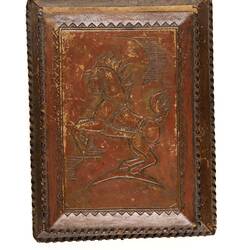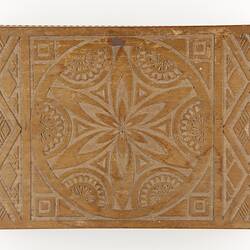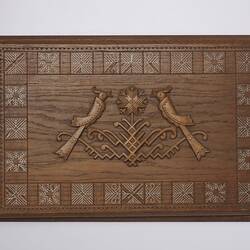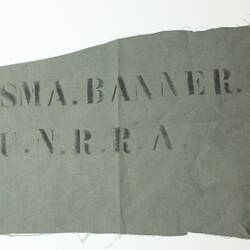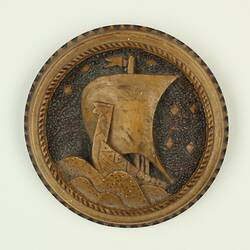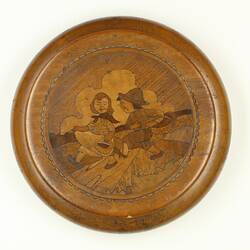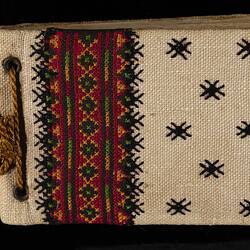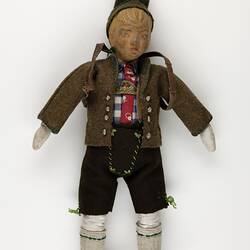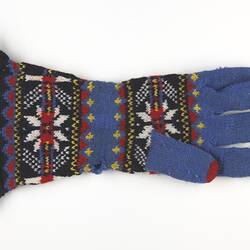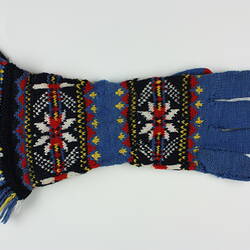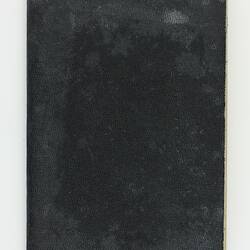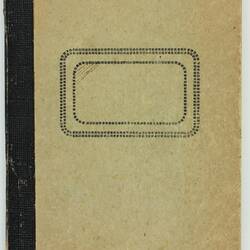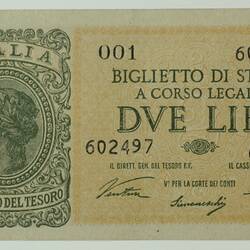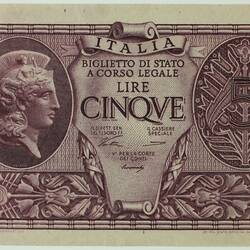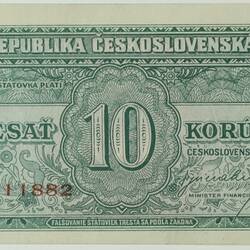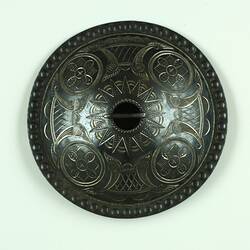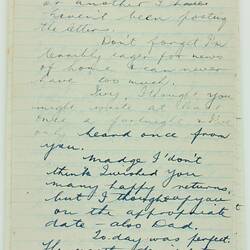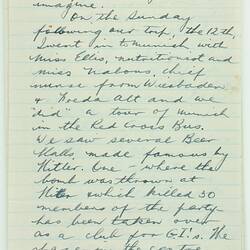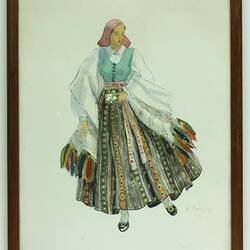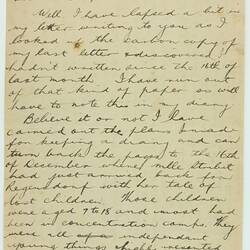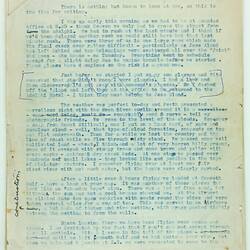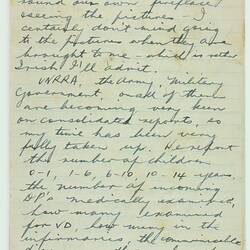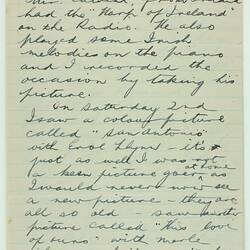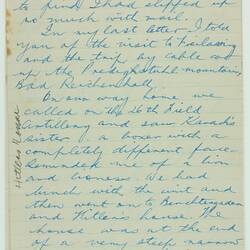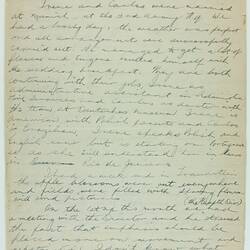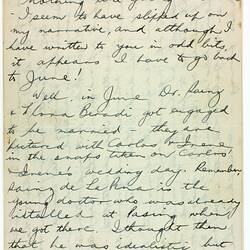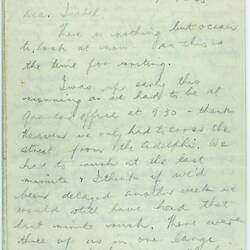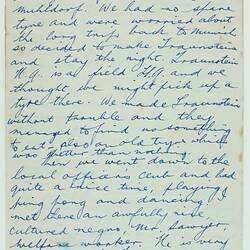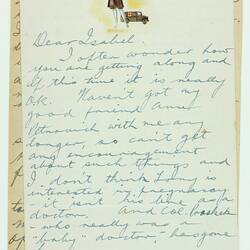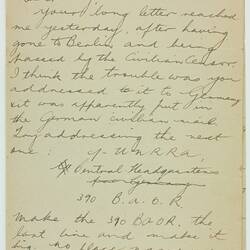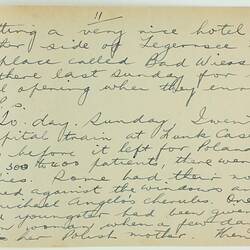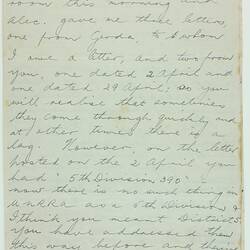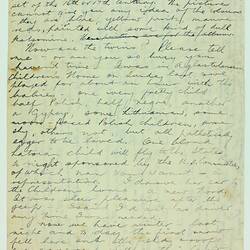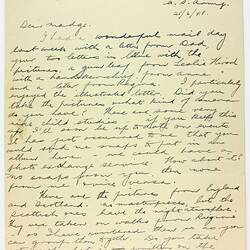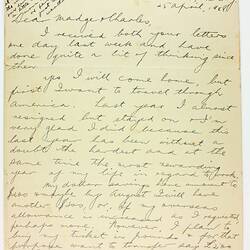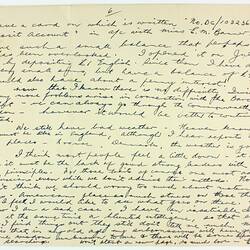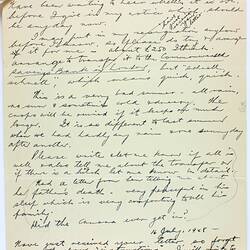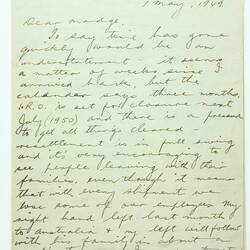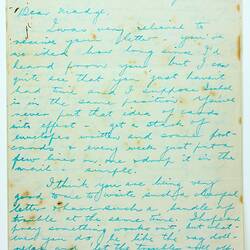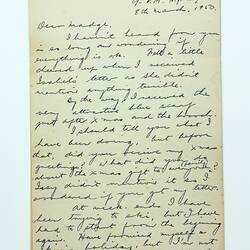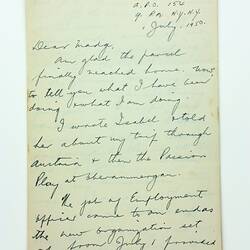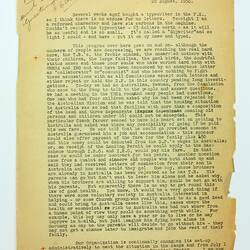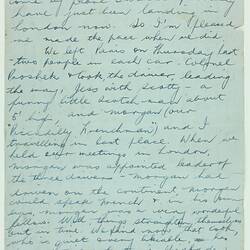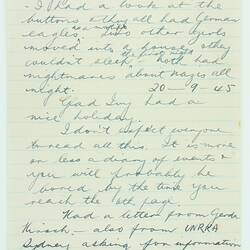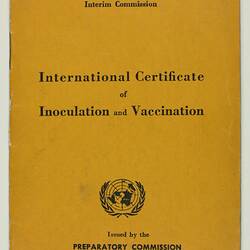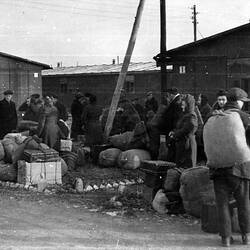Summary
This letter is an employment reference for Esma Banner from her former employer Robert G. Nall Ltd Printers, Lithographers and Paper Box Makers Sydney, NSW dated 24 July 1928. The letter commends Esma for her work as a stenographer for the company.
Esma Banner worked in displaced persons' camps in the US Zone of Germany after World War II as an employment and welfare officer for the United Nations Relief and Rehabilitation Administration (UNRRA) and the International Refugee Organization (IRO), from 1945 to 1951. Esma was one of 39 Australians who went to Germany to assist with post-war repatriation and re-settlement of refugees displaced by the war. More than 1000 displaced persons' camps were established by the Allied Forces. Initially created as temporary processing centres, the camps became longer term sites of accommodation, employment, education and recreation for refugees who could not, or did not want to, be repatriated to their countries of origin.
Physical Description
Single-sided one page letter with typed text and graphic of building in letterhead.
Significance
The Esma Banner World War II UN Worker Collection is an extensive and diverse collection of objects, documents, photographs and archival material which explores the experiences of an Australian woman working for the United Nations assisting in the relief and rehabilitation of millions of displaced people in Europe after World War II. Esma Banner served with the United Nations Relief and Rehabilitation Administration (UNRRA) and later with the International Refugee Organization (IRO) at displaced persons' camps in Germany from 1946 to 1951. She was one of fewer than 40 Australians employed by UNRRA and IRO during this period.
This collection recounts the often untold story of immigration from the perspective of a migration worker and enables the documentation of many themes relating to post World War II migration including life in the displaced person camps, international refugee management, creativity and cultural maintenance, and the political complexities of post-war resettlement. Of particular note are the craft items created by refugees living in displaced persons' camps. This collection holds a variety of men's and women's work, thus providing a significant insight into life within the camps. These objects also serve as valuable examples of cultural practices and traditional skills.
This collection and accompanying documentation presents a unique perspective of the post-World War II relief effort. Esma's diaries and letters in particular offer her personal insights and observations and demonstrate how civilians contributed to the reconstruction effort in Europe. In addition, these items add to the emerging collections of material describing women's involvements during times of conflict, as well as the larger narratives that illustrate Australia's wartime experience. After World War II hundreds of thousands of homeless, stateless or displaced people lived in camps before resettling in Western countries including Australia. This collection retains ongoing cultural relevance to these large migrant communities across Victoria and Australia. With the population of post-war displaced persons' survivors aging, the collection contributes to preserve their stories and experiences as part of a greater Australian migration narrative.
More Information
-
Collection Names
-
Collecting Areas
-
Acquisition Information
Donation from Helen Fitzgerald, 14 Aug 2012
-
Person Depicted
Ms Esma Banner, Sydney, New South Wales, Australia, 24 Jul 1928
-
Inscriptions
'MATTHEWS & CO., LIMITED, SUCCESSORS TO / ROBERT G. NALL LTD. / PRINTERS LITHOGRAPHERS / AND PAPER BOX MAKERS. / RESERVOIR STREET / SYDNEY / 24th July, 1928.'
-
Classification
Migration, Processing - immigration selection, Refugee camps
-
Category
-
Discipline
-
Type of item
-
Overall Dimensions
202 mm (Width), 255 mm (Height)
-
Keywords
Immigration, Immigration Policies, Migration & Settlement, Displaced Persons, Displaced Persons Camps, Wars & Conflicts, Cultural Identity, Cultural Traditions, World War II, 1939-1945, Immigration Selection, Administration, Travel, Working Life, Records, Employment, Refugees
